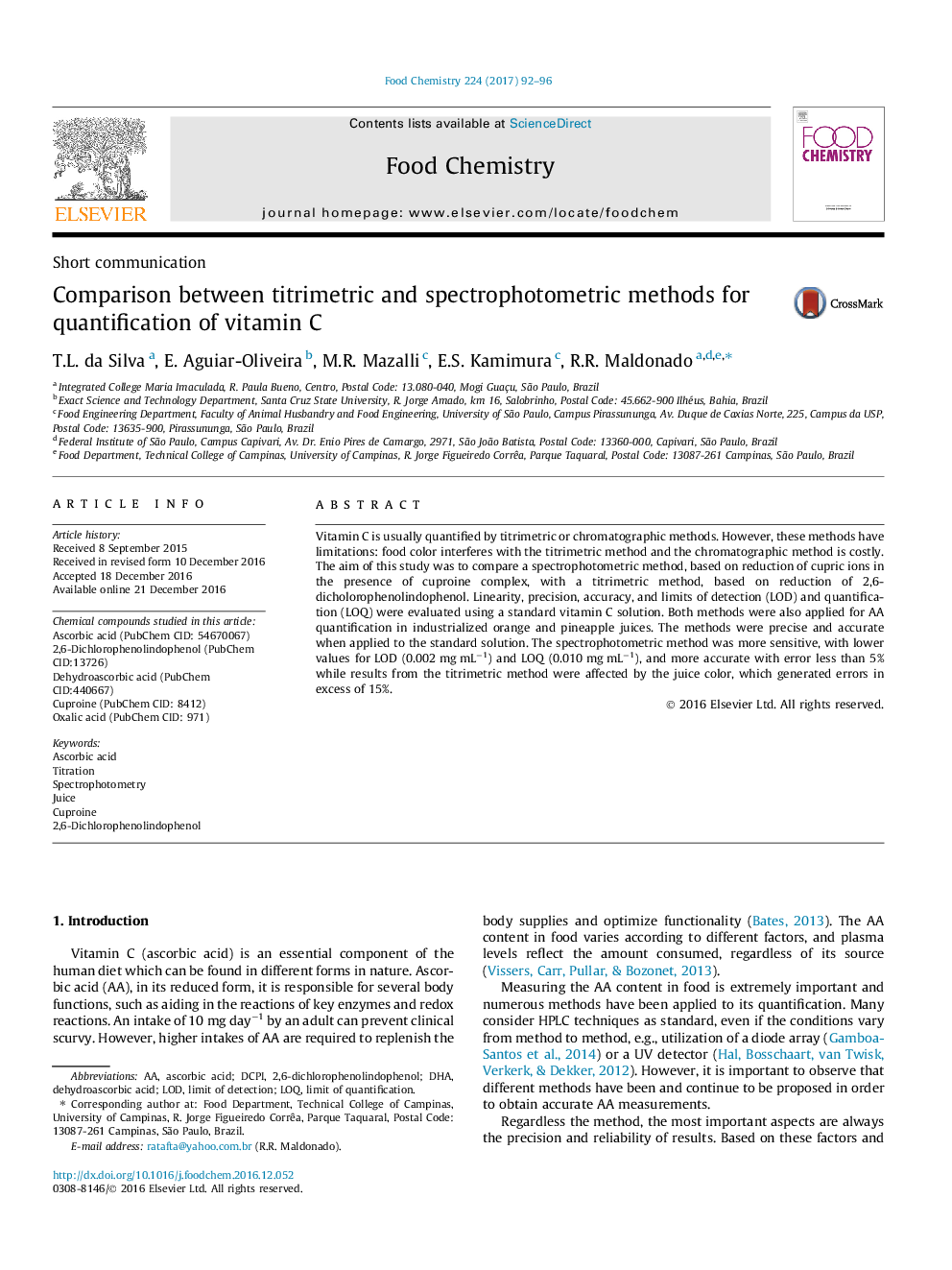| Article ID | Journal | Published Year | Pages | File Type |
|---|---|---|---|---|
| 5133590 | Food Chemistry | 2017 | 5 Pages |
â¢Spectrophotometric and titrimetric methods for AA quantification.â¢Linearity, precision, accuracy, limits of detection and quantification were evaluated using standard AA solution.â¢Spectrophotometric method was more accurate (error <5%) for AA quantification in industrialized fruit juice.â¢Titrimetric method had color juice interference resulting in errors >15%.
Vitamin C is usually quantified by titrimetric or chromatographic methods. However, these methods have limitations: food color interferes with the titrimetric method and the chromatographic method is costly. The aim of this study was to compare a spectrophotometric method, based on reduction of cupric ions in the presence of cuproine complex, with a titrimetric method, based on reduction of 2,6-dicholorophenolindophenol. Linearity, precision, accuracy, and limits of detection (LOD) and quantification (LOQ) were evaluated using a standard vitamin C solution. Both methods were also applied for AA quantification in industrialized orange and pineapple juices. The methods were precise and accurate when applied to the standard solution. The spectrophotometric method was more sensitive, with lower values for LOD (0.002 mg mLâ1) and LOQ (0.010 mg mLâ1), and more accurate with error less than 5% while results from the titrimetric method were affected by the juice color, which generated errors in excess of 15%.
